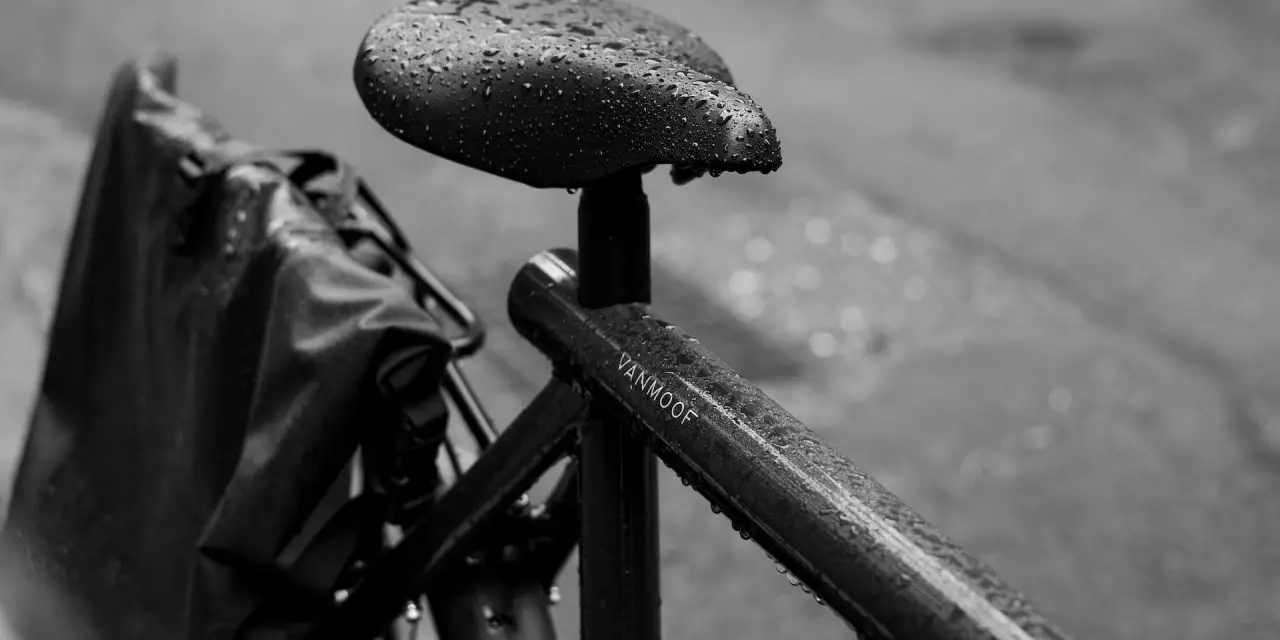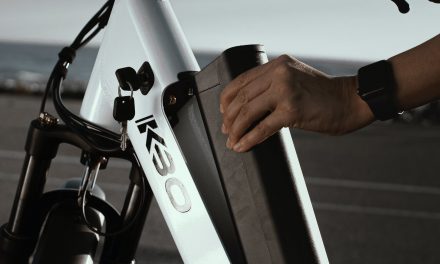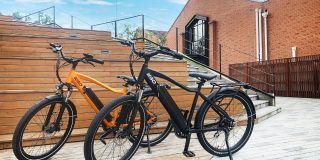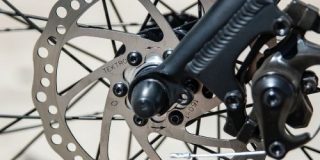Electric bikes have become a popular way to get around, and many people wonder if they can ride them in the rain. The answer is yes – but there are a few things you need to know first, including your bike’s water rating, helpful tips and more! In this blog post, we will discuss the best ways to ride your electric bike in the rain and keep yourself safe and dry.
- E-bike water resistance ratings: Everything you need to know
- 3 Do’s for Riding your e-bike in the rain
- What to avoid when riding your e-bike in the rain
- Helpful products for riding an e-bike in the rain
- Are all e-bikes safe to ride in the rain?
- Riding your electric bike in the snow
- Do you have to cover up your e-bike in the rain?
- Can you store your e-bike outside when it’s raining?
- Can you wash an electric bike?
- Final Thoughts
E-bike water resistance ratings: Everything you need to know
One of the first things you need to know about riding an e-bike in the rain is that it’s important to make sure your bike is properly rated for water resistance. In general, most e-bikes are designed to be used in light precipitation or on dry roads, and aren’t meant for prolonged exposure to heavy rain or snow.
To determine whether your bike is water-resistant, look for a rating on the product label that indicates what kind of weather it’s intended to be used in. For example, bikes with an IPX4 rating are suitable for light rain and may even be safe to use when splashing through puddles, while bikes with an IPX5 rating are suitable for heavy rain and vehicles that may be splashed.
IP (Ingress Protection) Ratings Explained
When shopping for an e-bike, you might have come across IP or Ingress Protection. Essentially this is an international standard that measures how well your e-bike will hold up to water, dust, and other debris. You can read more about IP Ratings on the International Electrotechnical Commission’s (IEC) website (which is the organization that created this standard rating scale).
The IP rating system uses two numbers – the first indicates the level of protection against solid particles (such as dust) while the second indicates resistance to liquids.
Broken out, the rating scale works like this:
IP – X [this is the first digit to indicate the level of protection against solid particles] – X [this is the second digit to indicate the level of protection against liquids]
- The first digit ranges from 0 to 6. Zero meaning no protection, and 6 meaning no dust could come in.
- The second digit ranges from 0 to 9. A zero rating again meaning no protection, whereas a 9 means that it’s protected against high-pressure hot water from different angles.
| First digit | Rating for Solids | Second digit | Rating for Liquids |
| 0 | Not rated | 0 | Not rated |
| 1 | 50mm or greater | 1 | Vertically falling water |
| 2 | 12.5mm or greater | 2 | Angled falling water up to 15 degrees |
| 3 | 2.5mm or greater | 3 | Diagonal falling water up to 60 degrees |
| 4 | 1mm or greater | 4 | Splashed water from all directions |
| 5 | Mostly protected from dust (some ingress) | 5 | Directed water |
| 6 | Completely protected from dust (no ingress) | 6 | Stronger directed water |
| 7 | Temporary submersion | ||
| 8 | Longer submersion | ||
| 9 | High-pressure hot water |
For example, bikes with a rating of IP55 are rated for protection against dust and water, while those with an IP66 rating are rated for heavy rain and splashing.
Keep in mind that these ratings only refer to the bike itself – if you ride through deep puddles or snow, there is still a risk that some of this water may get inside your motor or battery pack.
3 Do’s for Riding your e-bike in the rain
There are several key things to consider when riding an electric bike in the rain.
First, you should make sure that your battery is fully charged and that your lights are working properly. This will ensure that you have enough power for the ride, and it will help other drivers and pedestrians see you on the road.
Second, you should wear appropriate clothing for the weather. A raincoat and boots will help keep you dry, but you should also wear clothes that are comfortable and protect you from the wind.
Third, one final thing to consider when riding your electric bike in the rain is the type of tires you use. In general, most electric bikes come with puncture-resistant tires that are designed to handle wet and muddy conditions. However, if you’re worried about getting a flat tire, you can also invest in some extra-durable tires that will help keep you safe on your ride.

What to avoid when riding your e-bike in the rain
You should never let your battery or motor submerge in water. If you do, it could cause significant damage. Additionally, riding your e-bike in extreme winds or on fast hills can be dangerous and can increase the risk of a flat tire.
Overall, riding an electric bike in the rain can be a fun experience – as long as you take the right precautions and are careful to avoid any dangers that may come with it.
Helpful products for riding an e-bike in the rain
Now that we’ve walked through the different ratings and important things to consider when riding your e-bike in the rain, here are some helpful products that might make your ride a little more enjoyable:
- Safety Gear: Always wear appropriate safety gear such as a helmet, waterproof clothing, reflective gear, etc. Reflective gear (like this one) is a HUGE factor in visibility and we cannot recommend it highly enough, especially in the rain when visibility is often limited.
- Fenders: Nobody likes to get water and mud splashing up their back when riding their bike. That’s why fenders are a great investment for riding in the rain, as they can help keep you and your bike clean and dry. If your e-bike has fenders, be sure to keep them clear of debris so that they are effective at keeping water and mud off of you and your bike.
- Rain gear: Sometimes the rain catches you off-guard. That’s why I always have one of these in my backpack when I go hiking or for a longer bike ride. Yeah, nobody likes these things, but hey, if it’s between wearing this and getting wet, I’m choosing to stay dry (and look a little dorky). Just make sure it doesn’t get caught up in your tires or pedals.
Are all e-bikes safe to ride in the rain?
While most electric bikes are safe to ride in the rain, it’s important to remember that not all of them are created equal. Some electric bikes are specifically designed for wet weather conditions, while others may not be as reliable.
As we already went through in detail above, the IP rating of an electric bike will give you a good indication of how water-resistant your e-bike might be.
If you’re unsure whether your electric bike is safe to ride in the rain, it’s best to contact the manufacturer or dealer.
Riding your electric bike in the snow
Riding your e-bike in the snow or other wet conditions can be a lot of fun, but it’s important to always exercise caution and wear the proper safety gear. Keep in mind that snow is quite a bit different than rain. While you (generally) don’t have to worry as much about your bike getting wet in the snow, road conditions are much different!
Fat tires tend to do much better in the snow than, for example, thin road bike tires. Always make sure you are prepared for snowy conditions and feel comfortable riding in the snow before you head out on an adventure.
You might also like:
- What Are Studded Snow Tires on Bikes?
- Fat Tire Bikes in the Snow: Are they any good during the winter?
Do you have to cover up your e-bike in the rain?
There is no one right answer to this question – it depends on the specific bike and other factors, such as your budget, riding style, and preferences.
Some electric bikes are designed specifically for use in wet weather or winter conditions, so if you’re unsure about whether to cover up your e-bike in the rain, it’s best to consult the manufacturer or dealer for advice.
Ultimately, the best way to protect your e-bike from the rain is to take proper care of it and invest in high-quality accessories and gear that can help keep it safe and functional. Whether you’re riding a budget commuter bike or a top-of-the-line performance model, taking good care of your bike will prolong its life.
Can you store your e-bike outside when it’s raining?
Again, to answer this question, you have to go back to the IP rating of your specific e-bike. Let’s say it’s rated IP69, in which case, rain should not be a problem. But let’s be honest, who wants to store their bike in the rain continuously?
Generally speaking, you should make sure you have a dry spot to store your bike long-term. If your bike is rated appropriately and it rains while your bike is stored outside when you’re at work, it should be fine. But if it’s a common occurrence, you should try to find a long-term solution.
Solutions for keeping your bike dry
Whether you have an e-bike or a regular bike, investing in something to keep your bike dry when it’s not in use is always a good idea. Ideally, you would store your bike indoors, such as a garage, shed or even in your house or apartment. But sometimes you just don’t have that option, so here are a few alternatives:
- Bike cover: A bike cover (like this one) is a simple and affordable solution for keeping your bike dry. It’s typically lightweight, easy to use, and can be stored when not in use.
- Outdoor bike storage shelter: This is a bit different from a simple bike cover, in that it’s actually a more robust structure. An outdoor bike storage shelter (like this one) can be a more permanent solution than a simple bike cover.
- Bike rack or wall mount hanging device: Let’s say you don’t have the floor space to store your bike inside, but what if you could mount it on the wall? Bike hanging devices (like this bike wall mount) are a great option to squeeze out extra space where you thought you had none.
Ultimately, protecting your electric or regular bike from the rain and other elements is all about using common sense and finding the right solution for your specific bike and needs. Whether you opt for a cover, rack, or another method, the most important thing is to take good care of your bike so that you can enjoy it safely and confidently for years to come.
Note that if you keep your bike outside long-term, you might start to see some damage, rust, or degrading of materials, even if you use measures to prevent damage. Bikes just aren’t meant to be kept out in the elements long-term.
Can you wash an electric bike?
Yes, you can wash an electric bike just like you would a regular bike. However, there are some important tips to keep in mind when doing so. First and foremost, it’s crucial that you never submerge your e-bike in water. Whether it’s rain, snow, or another type of liquid, be sure to dry off your e-bike completely before riding or storing it.
Additionally, you should always use a gentle cleanser when cleaning your bike. Never use harsh chemicals such as bleach or other types of corrosive substances, as these can damage the sensitive components of an electric bike. And finally, if you have any questions about washing and caring for your e-bike, it’s best to consult the manufacturer or your local bike shop for advice and recommendations.
Final Thoughts
Another important factor to consider when riding in the rain is your own safety gear. If you’re wearing water-resistant clothing, shoes, gloves, and other accessories, you will have much better protection against getting wet while riding in














